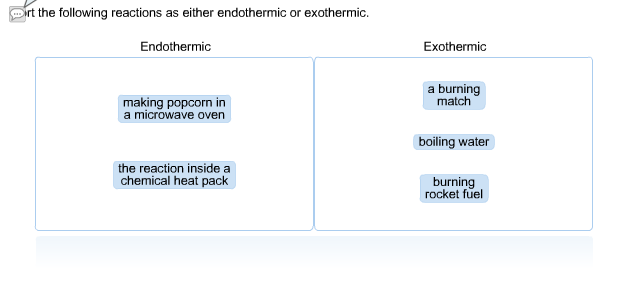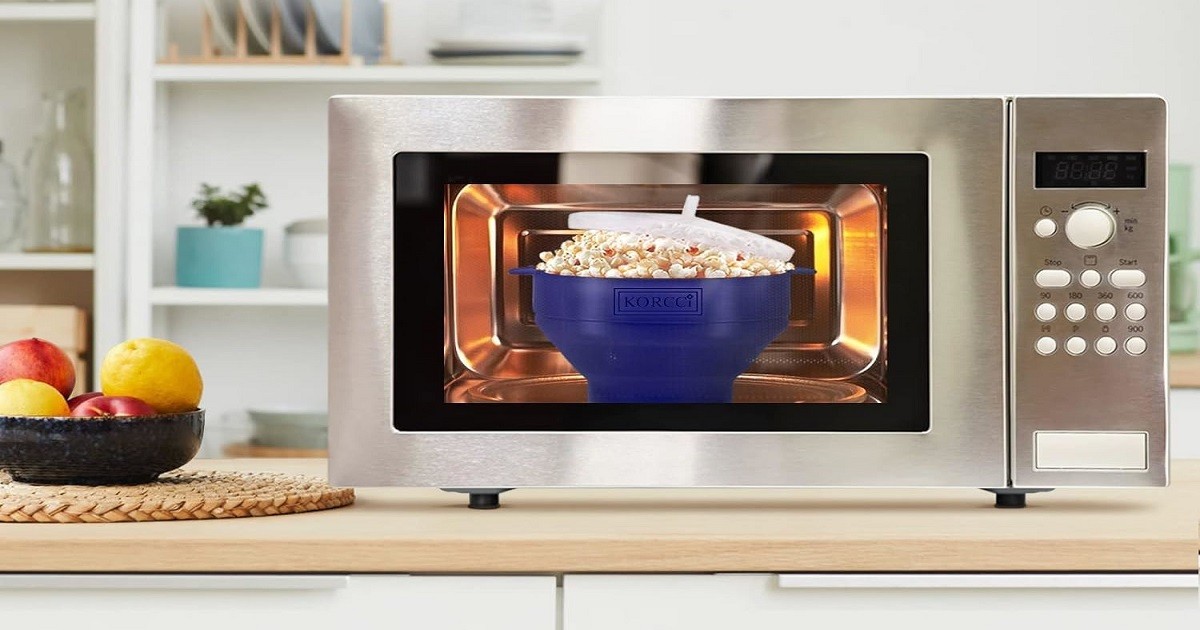As an Amazon Associate, I earn from qualifying purchases
Popcorn popping in a microwave oven is an exothermic process. Heat energy is released as the kernels explode.
Popcorn has been a beloved snack for movie nights and cozy gatherings, and its preparation is as fascinating as its taste. The transformation of a kernel into a fluffy snack is a result of an exothermic reaction, where the water inside the kernel turns to steam, building pressure against the hard shell.
Once the pressure overcomes the resistance, the kernel bursts open, releasing energy and creating the characteristic ‘pop’. The microwave oven’s role is crucial, as it provides the electromagnetic waves that heat the water molecules within the popcorn kernels. This process not only offers a quick and convenient way to enjoy popcorn but also serves as an intriguing example of everyday chemistry in action. Understanding the science behind this culinary delight enhances the appreciation for this simple yet satisfying treat.
The Science Of Popcorn
Let’s dive into The Science of Popcorn. It’s a fascinating journey from kernel to snack. This process involves heat, pressure, and a rapid physical transformation. Understanding it will change the way you see this beloved treat.
The Anatomy Of A Kernel
A popcorn kernel is a seed. Inside, you find soft starch and a drop of water, all wrapped in a hard shell called the hull. When heated, the water turns into steam. The hull holds the steam inside until the pressure is too much.
What Makes Popcorn ‘pop’?
Popcorn popping is an exothermic reaction. The kernel heats up, the water inside creates steam, and pressure builds. Once the hull breaches, the steam expands. The starch inside bursts out, cooling and forming the popcorn we eat.
| Step | Process | Reaction Type |
|---|---|---|
| 1 | Kernel heats | Exothermic |
| 2 | Steam creates pressure | |
| 3 | Hull bursts, starch expands |
The perfect popcorn pop is a quick, hot, and exciting reaction. It’s a tiny spectacle of nature’s power right in your microwave. So next time you’re ready for a snack, remember the science that makes it possible.
Heat Transfer And Popcorn
Ever wondered why popcorn pops? It’s all about heat transfer. When you heat popcorn kernels, they turn into the fluffy treats we love. But is this process endothermic or exothermic? Let’s find out by exploring how heat moves during cooking.
Conduction, Convection, And Radiation In Cooking
Cooking uses three heat transfer methods: conduction, convection, and radiation. Each plays a role in making popcorn in a microwave.
Conduction
Conduction is heat moving through a solid. In microwaves, the turntable gets hot and transfers heat to the popcorn bag.
Convection
Convection is heat moving through liquids and gases. The hot air inside the microwave helps cook the popcorn evenly.
Radiation
Radiation is heat traveling in waves. Microwaves use this to cook food. But it’s not the main way popcorn pops.
How Microwaves Excite Water Molecules
Microwaves make water molecules in popcorn kernels vibrate. This creates heat. The heat makes steam, and pressure builds up. When the pressure gets too high, the kernel explodes. That’s your popcorn popping. This is an exothermic reaction, as it releases energy in the form of heat.
| Heat Transfer Method | Role in Popcorn Popping |
|---|---|
| Conduction | Heats the turntable and popcorn bag |
| Convection | Heats air inside the microwave for even cooking |
| Radiation | Microwaves excite water molecules in kernels |
So, popping popcorn in a microwave is exothermic. It releases heat as the kernels explode. Next time you make popcorn, think about the science behind every pop!
Endothermic Vs. Exothermic Reactions
Let’s explore the fascinating world of Endothermic vs. Exothermic Reactions. These terms sound complex but are simple to understand with everyday examples like popcorn popping in a microwave.
Defining Energy Absorption And Release
In simple terms, endothermic reactions absorb heat, while exothermic reactions release heat. This fundamental difference dictates how substances interact with their environment.
Common Examples In Everyday Life
- Ice melting – Heat pulls from the surroundings (endothermic).
- Water boiling – Heat escapes into the air (exothermic).
- Photosynthesis in plants – Sunlight absorbed to create energy (endothermic).
- Fire burning – Heat released into the environment (exothermic).
Understanding these reactions helps us grasp why certain processes occur in nature and technology. For instance, when popcorn pops in a microwave, it is an exothermic reaction. The kernels heat up, releasing energy as they explode open.

Credit: www.chegg.com
The Popcorn Popping Process
Popcorn popping in a microwave is a fascinating transformation. Kernels turn into fluffy snacks with heat. Let’s explore how this happens.
Stages Of Kernel Transformation
Popcorn kernels undergo distinct changes when heated. Here is a breakdown:
- Moisture Heating: Each kernel contains water. This water heats up first.
- Pressure Buildup: Steam pressure increases inside the kernel.
- Hull Rupture: Eventually, the pressure bursts the kernel open.
- Expansion: Starch inside the kernel expands, creating popcorn.
Energy Dynamics During Popping
Understanding the energy involved is key. Is popping endothermic or exothermic? Here’s a simple explanation:
| Process | Type of Reaction | Energy Flow |
|---|---|---|
| Heating Kernel | Endothermic | Energy absorbs into the kernel. |
| Kernel Popping | Exothermic | Energy releases as the kernel pops. |
The initial heating is endothermic. Kernels absorb microwave energy. When they pop, the reaction becomes exothermic. Energy releases quickly.
Investigating Microwave Popcorn
Welcome to ‘Investigating Microwave Popcorn’ – a sizzling topic for snack lovers and science enthusiasts alike. We’ll explore the fascinating interaction between microwave technology and our favorite movie-time treat. Let’s dive into the kernels of truth behind this everyday phenomenon!
Microwave Technology And Food
Microwaves heat food through a process that’s both simple and complex. They use microwave radiation to excite water molecules in food. This creates heat and cooks the food from the inside out. Popcorn is no exception. The tiny bit of water inside each kernel turns into steam. It causes the kernel to explode into the fluffy snack we love. This process is known as an exothermic reaction. It releases energy in the form of heat.
The microwave oven has become a staple in modern kitchens for its speed and convenience. It’s ideal for popping corn. Each kernel transforms into a popcorn puff quickly and uniformly, making microwave ovens a favorite among popcorn enthusiasts.
The Role Of Packaging In Microwave Popcorn
The packaging for microwave popcorn isn’t just a container. It’s a key player in the popping process. Manufacturers design special bags to maximize popping efficiency. They also ensure even heating. These bags often contain a susceptor. It’s a material that absorbs microwaves and heats up. This helps pop the corn evenly and quickly.
The packaging is also specially folded to allow for expansion as the kernels pop. It creates a steamy environment inside. This is perfect for popping. Next time you unwrap a popcorn bag, remember, it’s a marvel of food science, designed to give you the perfect pop.

Credit: www.linkedin.com
Determining The Nature Of Popping
Ever wondered what happens when popcorn pops? This fascinating process is not just a treat to our taste buds but also a perfect example of a physical and chemical reaction. Let’s dive into the science behind it and determine the nature of popping popcorn.
Analyzing The Energy Exchange
To understand the popcorn popping process, it’s essential to look at the energy exchange. Popcorn kernels transform with heat. Inside each kernel is water. Heat turns this water into steam. The steam builds pressure. When pressure is too high, the kernel explodes. This is the pop we hear.
But what about the energy? We need to know if energy goes into the popcorn or comes out during this popping process.
Is Popping Popcorn Endothermic Or Exothermic?
An endothermic reaction absorbs heat. An exothermic reaction releases heat. With popcorn, the microwave adds energy. This energy heats the kernel.
The kernel’s temperature rises. The water inside turns into steam. The pressure increases until the kernel bursts open. With the burst, energy releases. This release of energy makes the popcorn popping process exothermic.
So, next time you’re waiting for that delicious popcorn to be ready, remember the exothermic magic happening inside your microwave!

Credit: www.chegg.com
Frequently Asked Questions
Is A Microwave Oven Endothermic Or Exothermic?
A microwave oven operates on an exothermic principle, where it emits energy to heat food.
How Do You Classify The Reactions As Either Endothermic Or Exothermic?
Classify reactions as endothermic or exothermic based on energy absorption or release. Endothermic reactions absorb heat, while exothermic reactions release heat.
Is The Reaction In A Chemical Heat Pack Endothermic Or Exothermic?
The reaction in a chemical heat pack is exothermic, as it releases heat to the surroundings.
Is The Burning Of Rocket Fuel Endothermic Or Exothermic?
The burning of rocket fuel is an exothermic process. It releases energy in the form of heat and light during combustion.
Conclusion
Understanding the nature of popcorn popping in a microwave reveals fascinating science. It’s an exothermic reaction, releasing heat as kernels transform into fluffy treats. Remember, this simple snack’s preparation hinges on heat transfer principles. So next time you enjoy a bowl, you’ll appreciate the science behind every pop.
As an Amazon Associate, I earn from qualifying purchases
